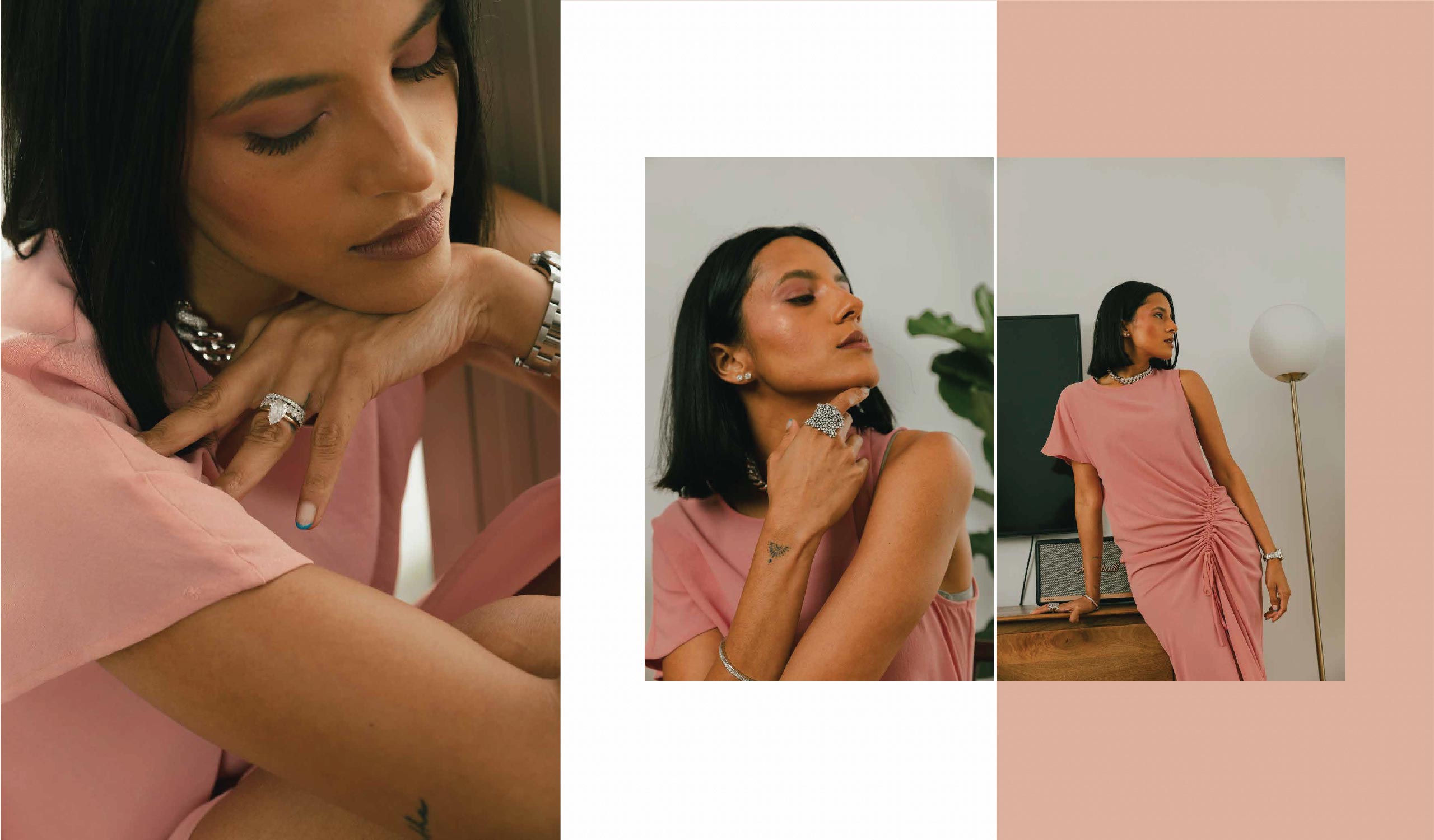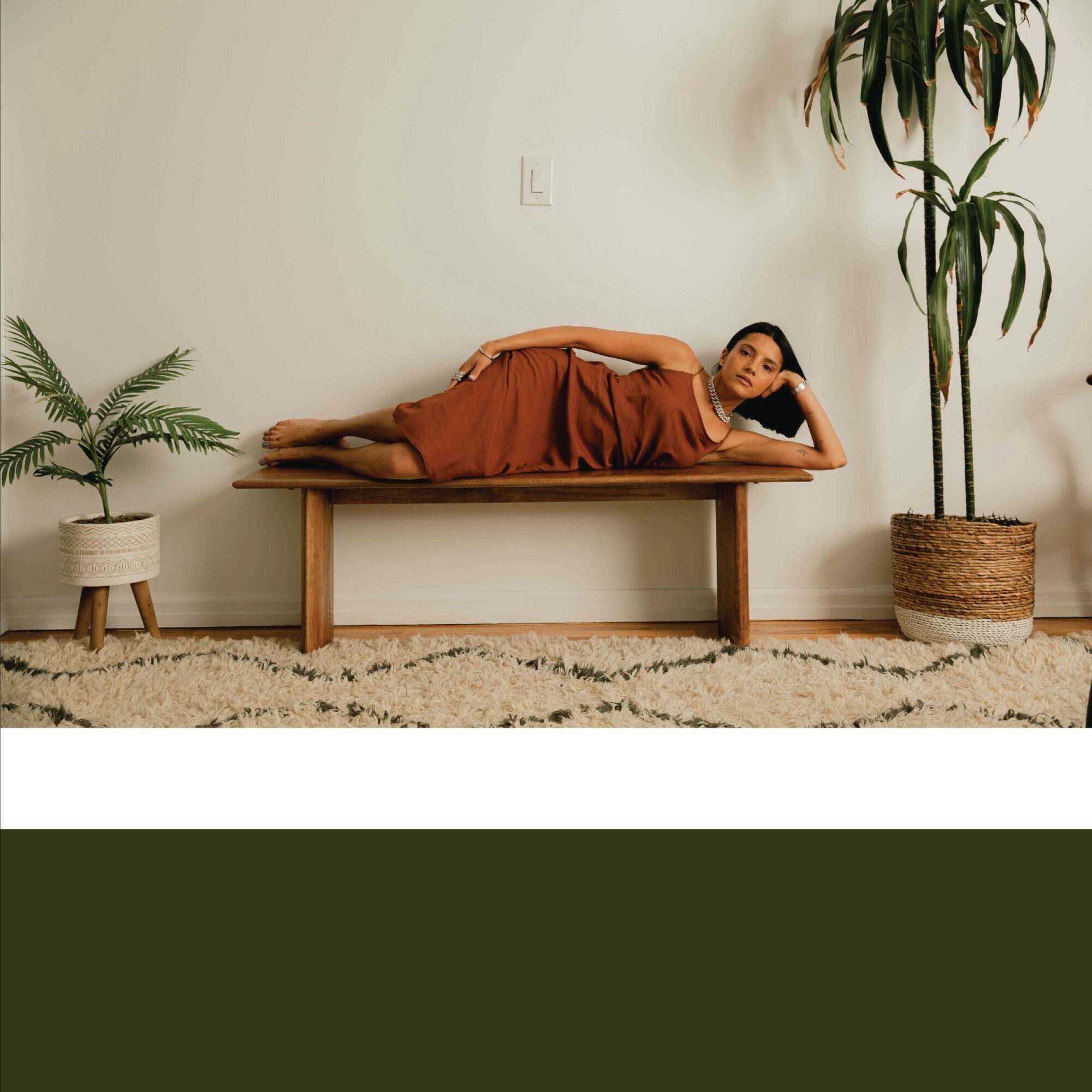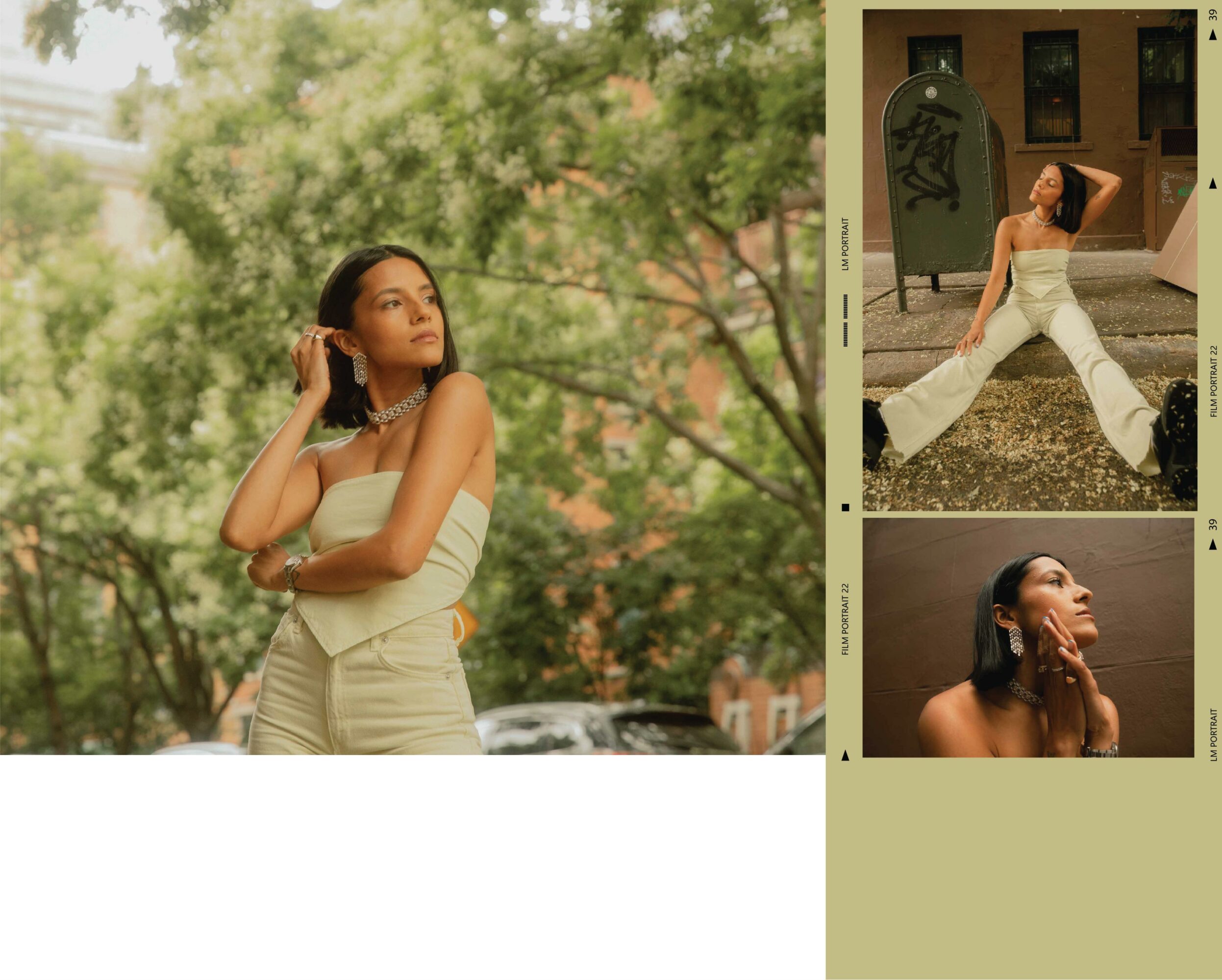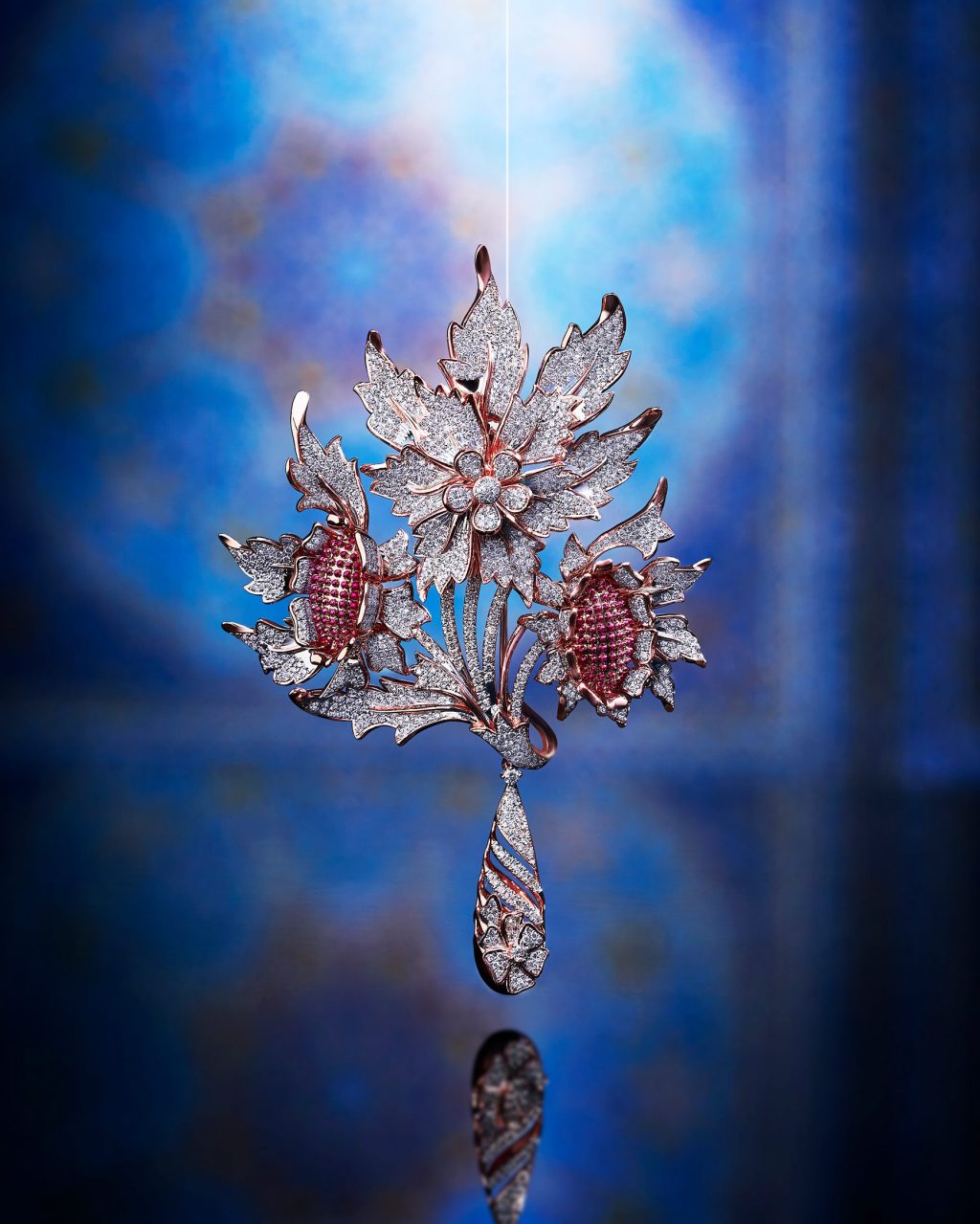Girl Wonder: New York Based Designer Megan Kothari on her Brand Aaryah
The young designer talks about carving a unique design aesthetic and how her South-Asian heritage influences her take on natural diamond jewellery.
All jewellery courtesy of Megan Kothari
|
“What’s the point of owning something beautiful and not wearing it? You can’t be pulling out your diamonds only on the occasion of a wedding,” says Megan Kothari on a call from New York. While her family has been adept in the diamond jewellery business, Kothari chose to veer on a different path. She studied at the Fashion Institute of Technology and went on to work with beauty conglomerates such as L’Oréal and Estée Lauder before embarking on a project of her own. “My love for jewellery began when I started working in beauty. During my travels to India, I had a penchant for collecting cool tribal jewellery, specifically big cuffs and statement necklaces, crafted by the Rabari community in Gujarat. Upon my return, I used to get a lot of compliments on the jewellery I wore. That’s when I realised my love for the craft and this urge to explore it further. I wanted to create designs that can be worn by second and third-generation South Asians as a way to carry the forward tradition.”
The designer launched her label Aaryah in 2016 as a costume jewellery brand, paying homage to the designs of the tribal clusters. Soon enough, she injected her expertise of natural diamonds into her work and it transitioned into a fine jewellery label at the heart of New York’s Diamond District. Today, her designs are not only coveted by fine jeweller enthusiasts from around the world but she also received the ultimate celebrity stamp of approval when musician Taylor Swift wore the ‘Rani’ earrings from her brand at the recently held Rock & Roll Hall of Fame Induction Ceremony.
Here, she talks about the multi-cultural influence that fosters her work and how her modern designs aim to prioritise wearability.
What’s the point of owning something beautiful and not wearing it? You can’t be pulling out your diamonds only on the occasion of a wedding.

Tell us about the inception of your label, Aaryah. How did you develop your design sensibilities and establish a unique aesthetic?
Our jewellery has been mission-driven from the very beginning. For me, women are the biggest inspiration and since the jewellery I personally wear has always been my form of self-expression, I wanted our pieces to be fierce and strong. So, while I did the transition from costume jewellery to the fine bridal category, that idea of boldness remains intact. All of our pieces are geometrical, reflective of the traditional rabari styles, they’re very metal heavy and we work with unique patterns. For our bridal work, while the diamond is the focal point of the ring, it has a very understated yet strong look to it. I wanted to cultivate a design aesthetic that’s a reflection of the wearer.
How do you feel your Indian heritage and your upbringing in New York City have influenced your designs?
I feel fortunate to constantly be connected to my culture and heritage. I visit India twice a year, and my grandparents still live there. And the reason I started Aaryah is that I wanted to support Indian craft, it’s always been close to my heart. Belonging to a family that has been in the diamond jewellery business for decades, I’ll consider myself lucky if the work ethic and the resilience that I’ve witnessed the older generations possess is transferred to me. Growing up, I remember barely seeing my father for the first nine years of my life here because of the long hours he was putting into establishing a solid business in a new country. I hope I can inherit that dedication. My upbringing in New York has also been incredibly inspiring, it’s a rough and tough city that keeps you on your toes and makes you feel alive. And that’s just one of the things I love about living here. This collision of two very diverse cultures is something that truly informs my creative process.
What are the most popular pieces at Aaryah?
Our best selling and most loved style is our ‘Trikona’ engagement ring. It has a really cool and unique take on a bridal ring because we played a lot with negative space, with the diamond at the forefront. As the name suggests, the piece features triangles that lend a mirror effect, and the shapes echo a nice symbolism. It’s not a traditional design but a majority of our clients are drawn to it at the first glance. There’s also the ‘Jupiter’ ring – a unique engagement ring replete with yellow diamonds, named after the planet, the piece is symbolic of healing, growth, and prosperity. The yellow pear-shaped diamond is an unconventional take on the solitaire and the modern design is crafted using 18KT gold.
I started Aaryah because I wanted to support Indian craft, it’s always been close to my heart.
Your work mainly consists of bridal jewellery as well as customised pieces for special occasions. How do you develop a relationship with a client and create a piece that aligns with their personality?
I initiate the process by letting the client express who they are, what they’re looking for, what their lifestyle is like. Most of our clients already come in pretty educated on diamonds, which helps navigate the conversation better. The idea is to build trust through an ongoing creative exchange. Once I get to know them I share a mood board and I ask them what speaks to them. From there, we start doing three designs and they pick what they like. When we come up with the final design, it’s really important for us to imbibe their feedback and keep an open dialogue flowing so that we can craft something that uniquely represents them, and their partner.
For me, women are the biggest inspiration and the jewellery I personally wear has always been my form of self-expression.

Considering the last two years have been challenging, how have you stayed creatively fuelled?
There’s burnout with any kind of job, especially when you’re running your own business. What keeps me driven is when I’m able to engage with my fellow South-Asian community in New York. Many clients reach out to us and tell us how our designs have eliminated certain preconceived notions and scepticism that people of colour have when it comes to jewellery. They’re delighted and pleasantly surprised by how different metals and silhouettes that they were afraid to experiment with actually look great on their skin. South-Asian clients also come to us looking to refashion their birthstones into contemporary fine jewellery – many want to translate it into a cocktail ring. Young Indian brides also come to us for a modern take on the mangalsutra. It’s cool because I can speak to people from a cultural point of view, knowing that like me they’re looking to connect to their heritage through jewellery.
What’s a piece of heirloom jewellery that you cherish and wear often?
A lot of heirloom jewellery that I value isn’t massive and grand but sentimental. My grandfather bequeathed to me a tiger’s nail that he framed in gold. I love that he gifted it to me and not to any of my male cousins. It’s an exquisite piece that exudes this fierce energy which is what makes it special. There’s a Navaratna necklace that belonged to my grandmother which was passed onto me. I’m a big believer in wearing jewellery with intention and this necklace features 9 powerful gems which include a beautiful rose cut natural diamond. And finally, I treasure a pair of diamond stud earrings that my father gifted to me on my 16th birthday. I probably didn’t appreciate the timelessness of these natural diamond studs during my teenage years but I ended up wearing them to my graduation and I continue wearing them today, because they’re so classic and versatile in nature, and it’s definitely something I’d love to pass on to posterity.
Your personal style is quite modern and androgynous. How do you feel this percolates into your designs?
I think most of the pieces that I design are an extension of myself. While that can be tricky because I’m so connected to them, I do feel all of our styles are delicate yet contemporary. I would like to think that a lot of them are non-binary and we’d want them to appeal to and be worn by individuals of all genders. Wearability is a key factor in my design language, this is why I experiment with bold shapes. My personal style is definitely driven by my mood – some days I’m wearing my husband’s oversized blazers, some days I’m wearing a short dress. This extends into our designs – each one has a very unique kind of look to it, no two rings are in a similar kind of category. They all speak to someone different. And that’s why I feel like our bridal style are immensely popular because we don’t want to do what everyone else is doing. These pieces aren’t created to sit in your safe, and you don’t need to wait for an occasion to wear them. Diamonds should be worn every day.
In a bridal jewellery sector dominated by frills and excess, Kothari belongs to the rare pedigree of designers who are determinedly weaving in style with substance through her contemporary vision – for the wearer who’s looking to invest in forever pieces beyond the shine.
Photographer: Sage East
Cinematographer: Oliver Chen
Make-up and Hair: Amrita Mehta
Production: By The Gram
